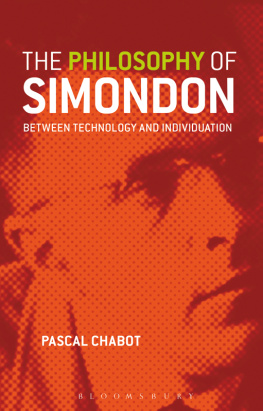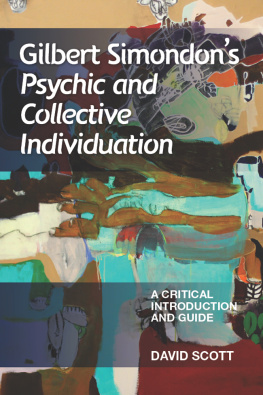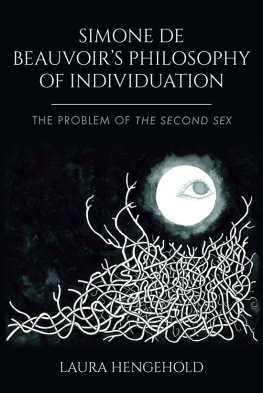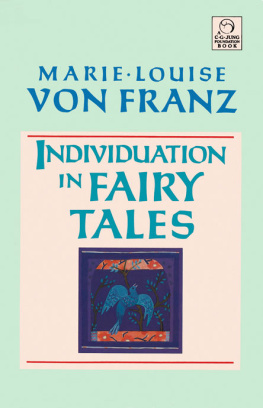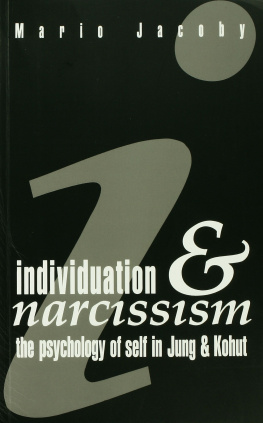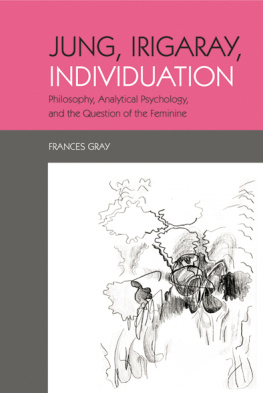Chabot Pascal - The philosophy of Simondon: between technology and individuation
Here you can read online Chabot Pascal - The philosophy of Simondon: between technology and individuation full text of the book (entire story) in english for free. Download pdf and epub, get meaning, cover and reviews about this ebook. City: London, year: 2014;2013, publisher: Bloomsbury Publishing Plc, genre: Science. Description of the work, (preface) as well as reviews are available. Best literature library LitArk.com created for fans of good reading and offers a wide selection of genres:
Romance novel
Science fiction
Adventure
Detective
Science
History
Home and family
Prose
Art
Politics
Computer
Non-fiction
Religion
Business
Children
Humor
Choose a favorite category and find really read worthwhile books. Enjoy immersion in the world of imagination, feel the emotions of the characters or learn something new for yourself, make an fascinating discovery.
- Book:The philosophy of Simondon: between technology and individuation
- Author:
- Publisher:Bloomsbury Publishing Plc
- Genre:
- Year:2014;2013
- City:London
- Rating:5 / 5
- Favourites:Add to favourites
- Your mark:
- 100
- 1
- 2
- 3
- 4
- 5
The philosophy of Simondon: between technology and individuation: summary, description and annotation
We offer to read an annotation, description, summary or preface (depends on what the author of the book "The philosophy of Simondon: between technology and individuation" wrote himself). If you haven't found the necessary information about the book — write in the comments, we will try to find it.
Chabot Pascal: author's other books
Who wrote The philosophy of Simondon: between technology and individuation? Find out the surname, the name of the author of the book and a list of all author's works by series.
The philosophy of Simondon: between technology and individuation — read online for free the complete book (whole text) full work
Below is the text of the book, divided by pages. System saving the place of the last page read, allows you to conveniently read the book "The philosophy of Simondon: between technology and individuation" online for free, without having to search again every time where you left off. Put a bookmark, and you can go to the page where you finished reading at any time.
Font size:
Interval:
Bookmark:

The Philosophy of Simondon
Between Technology and Individuation
Pascal Chabot
Translated by Aliza Krefetz with the
participation of Graeme Kirkpatrick

Bloomsbury Academic
An imprint of Bloomsbury Publishing Plc
| 50 Bedford Square | 1385 Broadway |
| London | New York |
| WC1B 3DP | NY 10018 |
| UK | USA |
www.bloomsbury.com
Originally published in French as La Philosophie de Simondon Librairie Philosophique J. Vrin, Paris, 2003. http://www.vrin.fr
This English language translation Aliza Krefetz and Graeme Kirkpatrick
Pascal Chabot has asserted his right under the Copyright, Designs and Patents Act, 1988, to be identified as Author of this work.
No responsibility for loss caused to any individual or organization acting on or refraining from action as a result of the material in this publication can be accepted by Bloomsbury Academic or the author.
British Library Cataloguing-in-Publication Data
A catalogue record for this book is available from the British Library.
ISBN: 978-1-7809-3098-5
Library of Congress Cataloging-in-Publication Data
A catalog record for this book is available from the Library of Congress.
Typeset by Fakenham Prepress Solutions, Fakenham, Norfolk NR21 8NN
Contents
Gilbert Simondons philosophy is of growing interest to scholars in the English-speaking world. Pascal Chabots book presents a clear and accessible account of Simondons thought. This book was one of the first to be published in France at the start of the recent revival of interest in Simondons philosophy, and it is the first monograph to appear on Simondon in English.
Simondons fundamental concern is with technology, and he offers us a unique approach to understanding what it is and how it relates to other aspects of the human condition. His vision is profoundly subversive of commonsensical oppositions: he explores technology in relation to human invention and artifice while at the same time showing that its development has a profoundly natural, even holistic character. Drawing on cybernetics, depth psychology and historical studies, as well as philosophy, Simondon propounds a worldview that is both optimistic and critical. To grasp its potential we need a study like Chabots, which puts his ideas into context and uses examples to show how they work.
Simondon presents an optimistic vision of technology development as a process that is, in its normal or natural unfolding, fundamentally integrative. This is what he calls concretization: designs combine elements to achieve a purpose, but in the process each element acquires new functions, and the overall design takes on a range that exceeds its designers original intention. Chabot illustrates this process with numerous examples and draws the relevant contrasts with other modes of thought, such as Marxism and social evolutionism. His account is particularly clear when it comes to showing how, through concretization, the technological individual acquires a new unity all its own, and as such is neither mere artifice nor natural in the standard sense of those terms.
Simondon also anticipates the relational turn which has dominated recent sociological thought. He argues that the individual cannot be understood independently of the pre-individual and that we cannot conceptualize individuals, be they humans, crystals or refrigerators, as anything other than congeries of ongoing relationships. In their pre-individuated state the impress of informational codes determines what used to be thought of as the form corresponding to a species or class of beings. As humans, we are shaped in this way by a variety of codes, and in this we do not differ from rock formations or other animals.
Unlike many contemporary theorists, however, Simondon does not infer from the ubiquity of informational codes that the human is merely an instantiation of code like any other technical individual. Technical objects are always at bottom born of abstract reasoning, and as such they are not the same as natural creatures. The distinction we observe here is not the one that seems to be invoked most of the time when we distinguish technical from natural entities, things from humans. The two are intertwined in their genesis and in their being, and understanding this enables us to clarify what our humanist prejudices actually are before we start to shed them. Chabots text is exemplary here in setting out the issues as Simondon understood them and in positioning his argument against the relevant background in terms of both the technical changes associated with cybernetics and other philosophies that invoke a relational ontology.
The ideas of concretization and individuation result in a uniquely technological conception of humanity and of human problems. Simondon is a philosopher of technology but it is clear that his motivation for this orientation is based on the conviction that philosophy is, or ought to be, all about technology. There is nothing more natural to humans than technical activity. Simondon combines a positive appreciation of technology as something valuable in itself with an understanding of nature that in many ways anticipates the green movement. For him, the inventor does not act against the world, but is better understood as working with elements of it to establish new kinds of coherence. The inventor-technologist is, like the artist, a seeker at the margins of society who tries to establish a different relationship to the world, alternative points of connection that can ultimately create new worlds for us to experience. For Simondon, technology has an integral aesthetic dimension, and technical action can be beautiful.
Translators acknowledgements
Graeme Kirkpatrick thanks Sarah Carling and Pascal Chabot for their encouragement throughout the translation process. Thanks also to Arne De Boever for helpful comments on a draft of Chapter 3, and to Caroline Wintersgill for her support and encouragement.
Aliza Krefetz thanks Franois Lagarde and Pascal Chabot for introducing her to Simondon. She also thanks Leah Hewitt for her encouragement, as well as Sharon Krefetz, Elliott Krefetz and Suckbir Pal Singh Sangha for their support.
Philosopher, amateur technologist, and Professor of Psychology at the Sorbonne, Gilbert Simondon produced a wide-ranging and original body of work. In a time of increased specialization and compartmentalisation of knowledge within disciplines, he worked towards a global vision of the connections between technology, science, psychology and philosophy. In the tradition of the encyclopaedists of the French Enlightenment, Simondon strove to produce a concrete philosophy that could confront problems of technology and society, cultural movements, and the evolution of psychology. He developed a philosophy of the emotions and sought to understand the consequences of technological change for civilizations. Inspired as much by Ionian physiology as by cybernetics, his was a philosophy of singularities. The encyclopaedists sought to trace the circumference of the sphere that encompasses all human knowledge. For Simondon, the centre of this ever-widening sphere is philosophical wonder. Wonder at the origins of natural and technological phenomena, channelled into a systematic interrogation of the processes that engender and perpetuate them.
Simondon was born on 2 October 1924 at Saint-Etienne in France, and died in 1989. Admitted to the cole Normale Suprieure in 1944, he went on to teach philosophy at the Lyce Descartes in the city of Tours, from 1948 to 1955. During his tenure at the school he substituted for the physics instructor whenever possible, and inducted his
Font size:
Interval:
Bookmark:
Similar books «The philosophy of Simondon: between technology and individuation»
Look at similar books to The philosophy of Simondon: between technology and individuation. We have selected literature similar in name and meaning in the hope of providing readers with more options to find new, interesting, not yet read works.
Discussion, reviews of the book The philosophy of Simondon: between technology and individuation and just readers' own opinions. Leave your comments, write what you think about the work, its meaning or the main characters. Specify what exactly you liked and what you didn't like, and why you think so.

